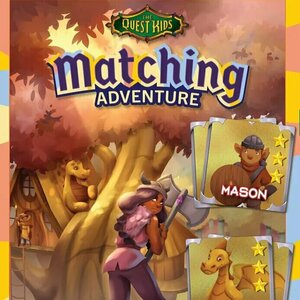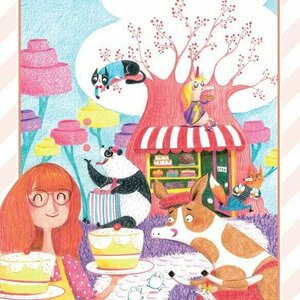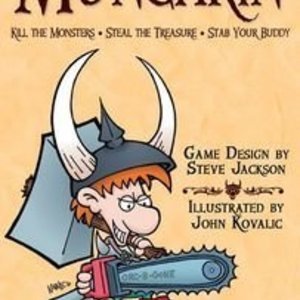
iHunter Manitoba
Sports and Utilities
App
iHunter Manitoba is the #1 Hunting app for Manitobans! Regulations updated annually once released...
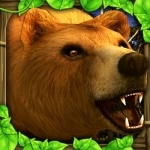
Wildlife Simulator: Bear
Games and Entertainment
App
Live the life of a Grizzly Bear! Survive as a young bear in a forest filled with dangerous...
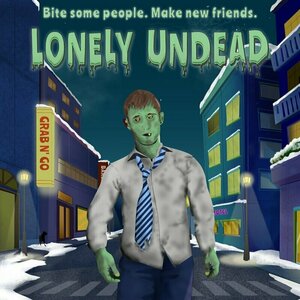
Lonely Undead
Tabletop Game
The life of a zombie can be a lonely one. Like anyone, zombies crave companionship. It's just too...
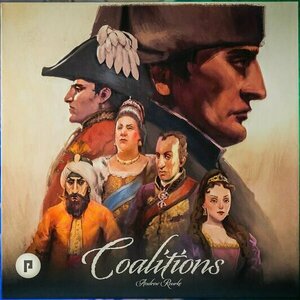
Coalitions
Tabletop Game
Coalitions is based on the series of conflicts known as the Revolutionary and Napoleonic Wars....
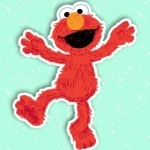
A Busy Day for Elmo: Sesame Street Video Calls
Games
App
This is an app of video messages from Elmo about seven fun and familiar preschool topics that he’s...

GeoNet GPS Navigator
Navigation and Travel
App
GeoNet – The new-generation offline GPS navigator, which enables you to select and use maps from...
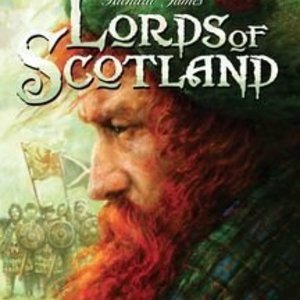
Lords of Scotland
Tabletop Game
The throne lies empty and the clans are restless. As a lord of Scotland with land, men and money at...
CardGames CelticGames PastedOnThemeGames
Purple Phoenix Games (2266 KP) rated The Quest Kids: Matching Adventure in Tabletop Games
Mar 25, 2021
The Quest Kids: Matching Adventure (can I please just call it MA from here please?) is a tile matching game based off the old evergreen Memory mechanic. However, this isn’t your gramma’s Memory. In it players are recruiting The Quest Kids to scare off the silly bad guys by matching tiles and collecting treasures. The player with the most stars at the end of the game will be the winner! But in actuality, all the players will be winners because all will have had a great time.
DISCLAIMER: We were provided a copy of this game for the purposes of this review. This is a retail copy of the game, so what you see in these photos is exactly what would be received in your box. I do not intend to cover every single rule included in the rulebook, but will describe the overall game flow and major rule set so that our readers may get a sense of how the game plays. For more in depth rules, you may purchase a copy online or from your FLGS. -T
To setup, shuffle the brown tiles, forest tiles, and river tiles separately. Lay out the brown treehouse tiles face-down into a 5 x 4 grid. Around these brown tiles will be placed the river tiles and forest tiles, the numbers of which are dependent upon how lengthy the players wish the game to be. Add the appropriate types of treasure tokens to the provided treasure chest and the game is ready to begin! We ALWAYS let our little go first. They like that.
On a turn each player will attempt to recruit a Quest Kid Hero from the brown treehouse tiles. Once a match has been found the player may begin taking their hero on an adventure! Adventures can only be attempted when a player has matched two Hero tiles from the treehouse. An adventure consists of finding a matching pair of bad guys, one each from the forest and river. For example, in order to find the matching Honey Beard bad guy tiles a Hero would need to search the river for one tile AND the forest for its match.
When bad guys are matched they provide the player with a certain number of treasures, as printed on their tile. The player reaches into the treasure chest and pulls out the correct number of treasures (my son’s favorite part). These treasures provide a number of stars (VP) depending on whether the player has matched a specific hero or not. Less stars are awarded if the appropriate hero is absent, more stars if that hero has been matched by the player.
Some treehouse tiles contain Quest Kid Allies. These Allies provide stars, but also very helpful special abilities to be used on a future turn. When these Allies are matched, the active player keeps the tile with stars and gives away the matching tile to another player. So that other player may also use the Ally for its special ability on a future turn. Alliances with a 3-year-old? I can dig it! Alliances that do not involve said 3-year-old? Watch out for the forthcoming tantrum.
Play continues in this fashion of matching tiles, scaring away bad guys and receiving treasures, and utilizing Ally special abilities until all tiles have been matched and claimed. Players all add up their stars on their collected tiles and treasures, and the most stars collected wins the game!
Components. This game is a ton of tiles and treasure tokens. That equates to, well, a whole bunch of thick cardboard in a box. The material quality is very good, but I am most impressed with the art style. I love game art that can be cartoony while also being interesting and detailed. Such is the art here. The characters are really well illustrated and each have their own personality. I have one gripe about the components: the treasure tokens feature a small picture of the Hero that allows it to be worth more stars. That Hero picture is very very tiny and details do not really transfer well to the small space, so it IS difficult to know which Kid will power up the treasure. I did find a workaround if players are not colorblind: each Hero is featured along with a color. That same color is used as the token icon and can more easily be matched to the Hero. It may save some headache if players are able to use the color as the indicator instead of the tiny picture.
In a nutshell this is Memory with strategy. The main game mechanic is memory – matching up the tiles in order to collect them. However, by throwing in the randomness of treasure token pulls and the Ally special abilities, MA just becomes a thousand percent more compelling for children and adults alike. At the end of the game my son is having a great time and almost always asks to play again. The adults are also impressed that Memory can be so much fun!
So if you are looking for that game to introduce to your youngster that actually challenges their little minds, then I strongly recommend The Quest Kids: Matching Adventure. Yes, it’s Memory, but it’s Memory that is actually fun. It’s Memory with a theme, and a kid-based theme at that. It gives the littles an opportunity to look up to these kid heroes and lets them imagine being heroes themselves. Any game that helps to empower my children will definitely be a well-loved addition to my collection. Purple Phoenix Games (well, my wife, my son, and I) give this one a victoriously heroic 16 / 18. I won’t say that I will beat you every time, but my son may. I dare you to play against him. Just make sure you throw all your extra Allies to him or he will get real mad real quick.
Purple Phoenix Games (2266 KP) rated Kim-Joy's Magic Bakery in Tabletop Games
Apr 8, 2022
Kim-Joy’s Magic Bakery is a cooperative hand management scenario-based card game for two to five players. In it, players are employees of the Magic Bakery and are tasked with baking wondrous items to satisfy a group of customers requesting their favourite (it’s British, I’m just doing my part) dishes. The game ends once all customers have been served or are otherwise no longer in the game. Depending on the current scenario, the group scores points based on how many customers they were able to serve. All players win together or they do not win.
Setup the Customers card deck according to the number of players, shuffle them, and deal out one or two (depending on number of players as well) face up to the table to begin the Customer Row. Do NOT shuffle the Layers cards. Instead, separate them by type and place them all face-up in decks by type. Do shuffle the yellow Ingredients cards and place out five face up (or face down depending on scenario) to form the Pantry Row. Each player draws a starting hand of three Ingredient cards from the deck, and the starting player takes the Kim-Joy standee to begin!
On a turn, the active player will have choices of actions to be taken, in any order they choose, from among the following: take an Ingredient card, pass a card to another player, bake a Layer, fulfill a Customer order, or refresh the Pantry. Depending on the number of players, each turn will consist of either two or three actions being taken. Most actions are self-explanatory, but I will give a quick hit to them all. The active player may see an interesting Ingredient card in the offer row and may simply draw it into their hand for an action. Once the player has enough Ingredients to bake a Layer (by discarding the requisite Ingredient cards) they may do so for an action. If the player has a card they believe another player could utilize, they may simply pass them that card as an action – either Ingredient or Layer. The goal of the game is help fulfill customer orders, so by using an action to fulfill an order, the player discards all the necessary cards and helps the group inch one step closer to victory. At a loss and need a suggestion for an action? Discard all cards from the Ingredient Row and draw new ones.
Once each player has completed their actions, the Customer Row is shifted one space to the right and a new Customer comes into the bakery. The bakery can only accommodate three customers, so if a new hungry Customer visits, they force out the Customer who has been there the longest, and the players lose the opportunity to serve that (possibly irate) Customer. Play continues in this fashion of players completing actions working toward satisfying as many Customers as possible until there are no more Customers in the deck nor in the bakery. Players then count the number of Customers they served, and score points according to the goals set by the scenario card! As the game typically takes 15-30 minutes, player usually request another try, so be prepared for that eventuality.
Components. This is simply a card game that includes an unnecessary, but cute, standee to mark the starting player. The cards are nice, and come in two sizes. Surprisingly, the cards sport a non-linen low-gloss finish (I’m just saying that many games nowadays are linen and as thick as possible) and feature whimsical and wonderful artwork. The game as a whole is very stylish and boasts a super fun theme. I have no issues with the components, artwork, or theme here. It all works together really well.
I will definitely suggest that new bakers player their first game without the added challenges of the scenarios. They throw in some extra complexity and difficulty that younger bakers just will not appreciate. The different scenarios are all very interesting and add in a little wrinkle to the game to make it just that much more intriguing. I have enjoyed all the different scenarios I have played, though I have not played all of them. In time, my dears. In time. Luckily, the designer has aptly seen it fit to include Helpful Duck cards that act as any Ingredient card needed at the time. These little cuties are God-sends in certain situations, and can also be included in more numbers to make scenarios easier to complete.
Being big fans of the show, I knew my wife and I would love this one. It is cute, challenging, but doesn’t try to be much more than what it is. With so many games out there competing to be bigger, more complex, and more aggressive, it is so nice to settle down with a light and jolly little card game like Kim-Joy’s Magic Bakery. I feel like I am working in a bakery while I’m playing – orders are coming in too quickly and I need just one or two more actions each turn to gather ingredients and bake new layers. It’s a really great theme and a really great game regardless of theme. The weight is perfect for young and older players, and good cooperative games that are not susceptible to quarterbacking are sometimes hard to find. Purple Phoenix Games gives this one a quite scrumptious 10 / 12. I wonder if Kim-Joy herself plays this game. If so, I officially challenge her to play with my wife and I… and maybe show us a couple tricks in the actual bakery as well. I could go for a killer Chocolate Bombe, Millionaire’s Shortbread, or a vegetarian Old Fashioned Trifle! And if you get THAT joke, my brother will love you.
Purple Phoenix Games (2266 KP) rated Munchkin in Tabletop Games
Jan 6, 2020
In Munchkin games, you are trying to become the first player to reach 10th Level. That’s the goal. You take on the persona of a 1st Level basic human (no Starbucks jokes please) who will be adventuring with a party of your opponents through a dungeon. You will be kicking down doors, fighting monsters, placing curses on your fellow party members, and buffing yourself with cards featuring funny art and punny references. Your party mates are also trying to achieve 10th Level and will do everything they can to block your progress, so be prepared!
DISCLAIMER: This review is not for a specific game within the Munchkin universe, but for the system as a whole. All Munchkin games will pretty much use similar, if not exactly the same, rules to play the game with minor variations and different theming. I will be using The Good, The Bad, and The Munchkin for my review as it is one of the two versions I still own of the franchise. Also, I will not be detailing every rule in the book(s), but giving a brief overview of how the game plays. -T
Setup is easy: shuffle the deck of Door cards and the deck of Treasure cards. Deal cards to the players for their opening hands and keep the included die handy.
Your turn consists of just a few phases: Open a Door, Look for Trouble, Loot the Room, and Charity. To Open a Door, flip over the top card of the Door deck. If it is a monster you must fight it or run. If not a monster, you can move on to the next phase. If it IS a monster, prepare for combat. Combat is simple in that you add up all your bonuses from your gear cards you have attached to your character and try to beat the strength of the monster. Your party mates can screw with you during combat by adding strength to the monster or adding monsters to the fight to make it a more difficult encounter. If you win, you gain a Level on the spot. Some monsters are worth even more than one Level. If you did not encounter a monster, you will add the non-monster card you drew to your hand and you may Look for Trouble by playing a monster card from your hand to initiate a combat. This fight will work the same way and you will be susceptible to pile-ons as before. You may Loot the Room if you defeated a monster on your turn by drawing Treasure cards equal to the printed reward on the bottom of the monster card you defeated. If you defeated the monster yourself, unaided, these are drawn in secret. If you were given help by your mates then you may have to split up the loot per any agreements made. These cards are usually very advantageous to you so they are usually very valuable to others as they attempt to steal away your goods. If you did not fight a monster yet this turn, you may draw another secret card from the Door deck to add to your hand. Should your hand size climb above your limit (dictated by your Race card, if any) you will slide into the Charity phase to relieve your hand of extra cards. Give all excess cards to the player of lowest Level, or split them among those that share the lowest Level. It is now the next player’s turn and you continue play until someone reaches 10th Level.
Components. It’s a bunch of cards and one die. The cards are of okay quality. Nothing to write home about. The die is nice with one of the faces having the Munchkin logo head imprinted on it. It will also have a color scheme that matches the version of Munchkin you are playing, so it’s easy to match them back up if they become integrated with each other. Overall, the components are fine, but not wonderful. That’s probably why these are pretty inexpensive to purchase.
Okay, so like I said earlier the original vanilla Munchkin was the first hobby board game I ever purchased. My friends and family had no idea hobby games existed, so there was actually a pretty steep learning curve for us. Once we figured it out, however, we began to play it a ton and really love it! The cards are cute, the game play is pretty easy if you have played hobby games before, and the puns kept us rolling for a good while. There was a time when I owned every version of Munchkin in circulation and we never even played half of them. Seeing this I got rid of them through BGG Auctions. I have The Good, The Bad, and The Munchkin and Munchkin Zombies right now and I feel that will be plenty for me from here on out – unless they make a Doctor Who or Firefly set or something /*checks warehouse23 to find out if these are available/.
Do I still love Munchkin? No, not really. I LIKE it, but I don’t really want to play it all the time any more. Why? Well, as my gamer experience increases and I level up, my game tastes also level up. I see why people enjoy and even love this game system. I myself loved it for a time. But there are better games out there that accomplish the same feelings without being as sophomoric and have better choices to be made. Will I still play these games? Heck yeah! If someone asks to play a Munchkin game I am all in. I have different tastes and preferences now, but I’m no snob. Just come prepared, because I won’t go easy on you.
We at Purple Phoenix Games give this family of titles a backstabby 16 / 24.
